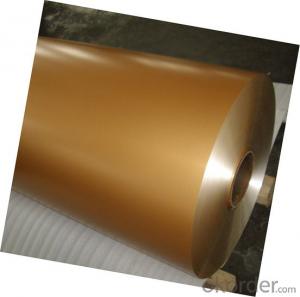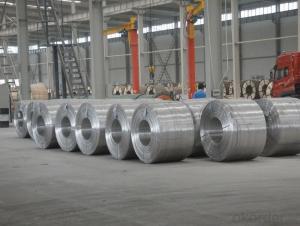6082 Aluminum Plate
6082 Aluminum Plate Related Searches
Led Light Bulbs For Ceiling Fixtures Led Lamps For Ceiling 42 In Ceiling Fan With Light Aluminum Coil Stock For Gutters Aluminum Foil For The Grill Hole Saw For Aluminum Plate Aluminum Tread Plate For Trailer Bow Plate For Aluminum Boat Aluminum Foil For Grow Room Aluminum Foil For Joint PainHot Searches
Stock Price For Aluminum Aluminum Coil Stock For Sale Aluminum Gutter Coil For Sale Used Aluminum Scaffolding For Sale 1/4 Aluminum Plate For Sale Aluminum Bar Stock For Sale Aluminum Round Stock For Sale Aluminum Diamond Plate For Sale Aluminum Scaffolding For Sale Craigslist 6061 Aluminum Plate For Sale Aluminum Dock Plate For Sale 7075 Aluminum Plate For Sale Aluminum Tread Plate For Sale Aluminum Checker Plate For Sale Aluminum Plate For Sale Near Me Plate Aluminum For Sale Aluminum Plate For Sale Aluminum Square Stock For Sale Aluminum Flat Stock For Sale Billet Aluminum Stock For Sale6082 Aluminum Plate Supplier & Manufacturer from China
Okorder.com is a professional 6082 Aluminum Plate supplier & manufacturer, offers integrated one-stop services including real-time quoting and online cargo tracking. We are funded by CNBM Group, a Fortune 500 enterprise and the largest 6082 Aluminum Plate firm in China.Hot Products
FAQ
- Yes, aluminum sheet can be used for architectural façade systems. Aluminum is a versatile material that offers durability, lightweight properties, and ease of installation, making it suitable for constructing attractive and functional façades in various architectural designs.
- Yes, 101 aluminum sheets are resistant to corrosion. Aluminum is naturally resistant to corrosion due to its oxide layer that forms on its surface when exposed to oxygen. This oxide layer acts as a protective barrier against corrosion and prevents the metal from deteriorating. Additionally, the 101 aluminum alloy is specifically designed to have enhanced corrosion resistance properties, making it even more resistant to corrosion compared to other aluminum alloys. Therefore, 101 aluminum sheets are a reliable choice when corrosion resistance is a concern.
- Yes, aluminum sheets can be used for battery enclosures. Aluminum is a widely used material for battery enclosures due to its excellent properties. It is lightweight, corrosion-resistant, and has good conductivity. These characteristics make it suitable for protecting batteries and ensuring their optimal performance. Aluminum's high strength-to-weight ratio also allows for the construction of sturdy yet lightweight enclosures, making it an ideal choice for various battery applications. Additionally, aluminum is easily recyclable, making it an environmentally friendly option. Overall, aluminum sheets are a viable and commonly used material for battery enclosures.
- The surface roughness of an aluminum sheet can significantly affect its overall performance. The roughness of the surface refers to the irregularities, bumps, and texture present on the sheet's surface. These irregularities can be measured using various methods, such as Ra (arithmetical average roughness) or Rz (mean roughness depth). One significant impact of surface roughness on aluminum sheet performance is in its ability to bond or adhere to other materials. A smoother surface allows for better adhesion, whether it is through welding, gluing, or painting. When the surface is rough, it creates less contact area and reduces the strength of the bond. This is particularly crucial in applications where the aluminum sheet is used as a structural component or in manufacturing processes that require strong adhesion. Surface roughness also affects the sheet's ability to reflect light. A smoother surface reflects light more uniformly, resulting in a higher level of reflectivity. In contrast, a rough surface scatters light in multiple directions, reducing its overall reflectivity. This property is relevant in applications such as architectural cladding, where the desired aesthetic appearance may rely on the sheet's ability to reflect light consistently. Moreover, the surface roughness of aluminum sheets can impact their corrosion resistance. A smoother surface is less prone to corrosion as it provides fewer sites for corrosion initiation. On the other hand, a rougher surface may have micro crevices or grooves that can trap moisture, salts, or other corrosive substances, accelerating the corrosion process. In applications where corrosion resistance is critical, such as marine environments or outdoor structures, maintaining a smooth surface is essential. Lastly, surface roughness affects the sheet's mechanical properties. A rough surface can act as stress concentrators, leading to increased susceptibility to fatigue, cracks, or other mechanical failures. Smoother surfaces distribute stress more evenly, enhancing the sheet's overall strength and resistance to deformation. In conclusion, the surface roughness of an aluminum sheet plays a vital role in its performance. It impacts adhesion, reflectivity, corrosion resistance, and mechanical properties. Therefore, considering and controlling the surface roughness is essential in various applications to ensure optimal performance and longevity of aluminum sheets.
- what family does aluminum belong to?its NOT the boron or aluminum family.i know its group 13. i need the family name.please help
- Aluminum is an orphan metal- (orphans appear in groups 3, 4, and 5 of the periodic table). They are called orphans simply because none belongs to a clearly defined family (like alkaline earth, transition metals, halogens, etc). Sometimes aluminum and the three elements below it in Group 3—gallium, indium, and thallium—are lumped together as the aluminum family, but that's not a clearly recognized family.
- Aluminum sheets typically exhibit an electrical conductivity ranging from 35.0 to 45.0 MS/m (mega siemens per meter) or 35,000 to 45,000 S/m (siemens per meter). Renowned for its exceptional electrical conductivity, aluminum possesses approximately 61% of the conductivity found in copper. As a result, aluminum is extensively used in diverse electrical applications, including wiring, power transmission lines, electrical busbars, and electrical equipment components. The conductive nature of aluminum facilitates the seamless and dependable flow of electric current, rendering it an invaluable material within the electrical industry.
- why intact aluminum sheet stop quicker than pectinate one in the magnetic field?
- while swinging in the magnetic field, intact aluminum sheets will formulate inner eddy current,that is the annular induced current.eddy current will transform the mechanical energy into heat energy, which makes the aluminum sheet stop quickly.but pectinate aluminum sheet can't formulate intact eddy current, so intact aluminum sheet stop quicker than pectinate one.
- are there any hazards in aluminium?
- The metal, yes. But you can always face the risk of get cut if it has sharp edges.














































